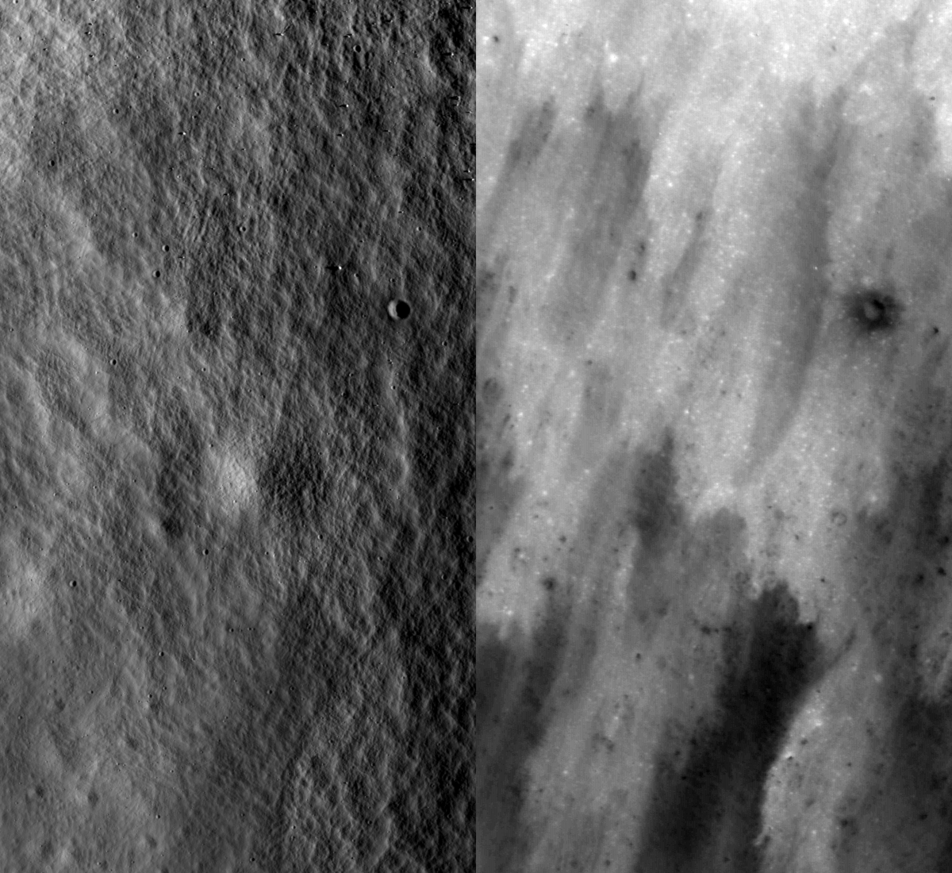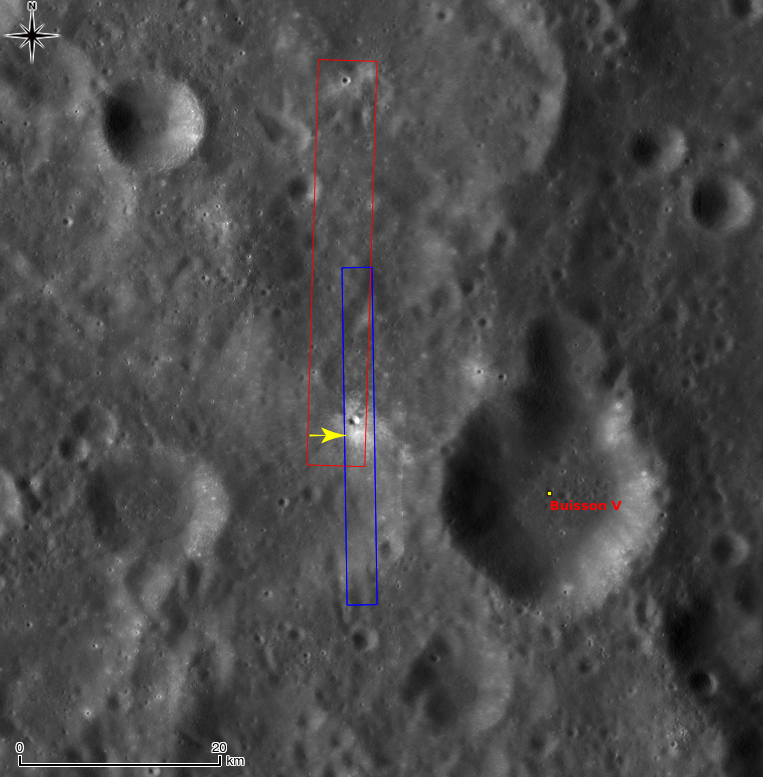
Today's Featured Image highlights differences in how the surface appears as the Sun angle changes. As seen in the opening image, the two images show the exact same area, but their appearances are remarkably different. Both images show the southern portion of the ejecta from an unnamed fresh crater (~1 km in diameter), located near Buisson V crater (19.5 km in diameter). The left image was acquired when the Sun was low on the horizon (incidence angle = 68°), and the left image was acquired when the Sun was nearly overhead (incidence angle = 8°) . Both were acquired with the cameras looking straight down. A small crater (~27 m in diameter) in the upper-middle and right side of each image is a good landmark to confirm that both images show the same location.
When the Sun is high (right side) no resolvable shadows are cast, and surface brightness (albedo) variations stand out. The low Sun image (left side) has sharp shadows highlighting the surface texture. Due to these drastic changes caused by the Sun angle, scientists use NAC images at specific lighting conditions for different studies (morphology, composition, maturity, topographic mapping, etc).

Context view of the unnamed fresh crater ejecta in LROC WAC monochrome mosaic (100 m/pix). Image center is 0.338°S, 110.817°E. The footprints (M146255155R: blue, M187520776L: red) and the location of opening image (arrow) are illustrated [NASA/GSFC/Arizona State University].
Explore the two contrasting NAC images in full resolution below!
Related posts:
LROC Coordinates of Robotic Spacecraft - 2013 Update
Peary Crater: Greetings from the North Pole of the Moon
Published by Hiroyuki Sato on 3 July 2014